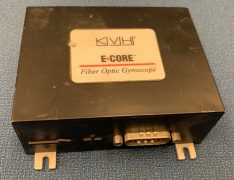Fiber Optic Gyro (FOG) Teardown
by David Kohanbash on April 18, 2022

I recently had an opportunity to take apart a Fiber Optic Gyro (FOG). I have always known the theory behind a FOG and that there was a fiber optic cable that was used as the sensing element, however I was not prepared to actually see the fiber optic cable in the sensor. The unit I have to open is a single axis KVH 225140-1-3. It is a 12V version with RS-232 data output. Back in the day, this was a really nice unit!
Please enjoy these images below as we open up a FOG and get to see the actual fiber.












Hopefully you enjoyed seeing this teardown and how actual physical principles are implemented in hardware. Leave comments below if you have more details on how this works.


Comments
this implements what is called Sagnac effect, basically a resonator for light waves.
Thanks. Do you have more information based on above components you can share?